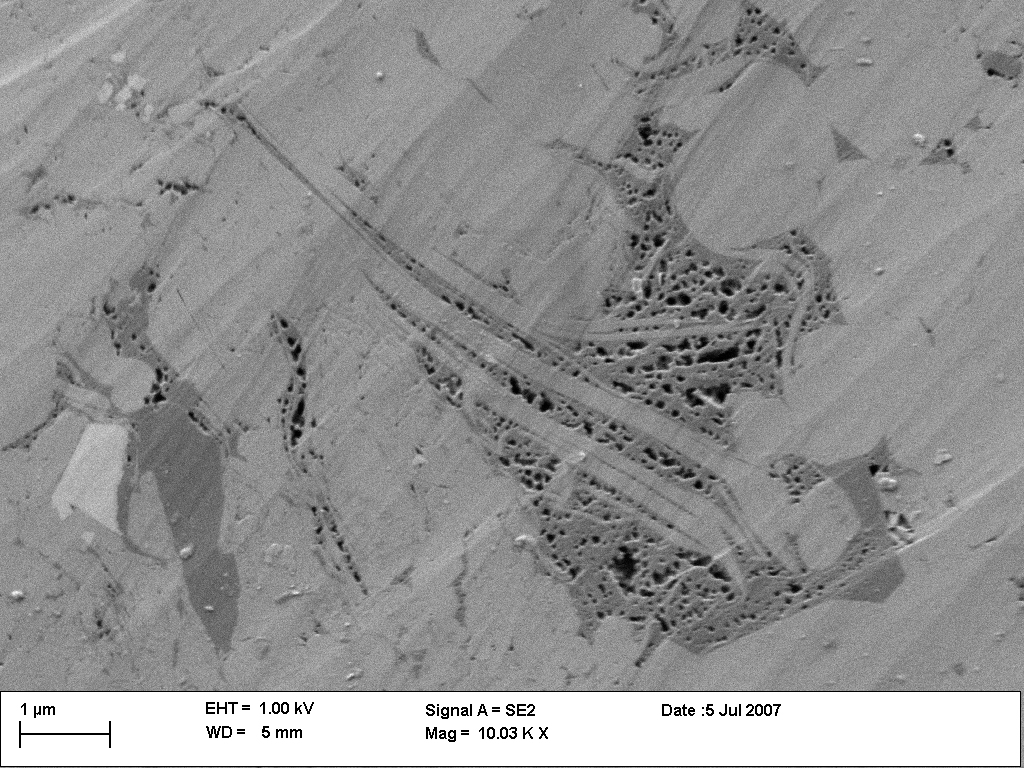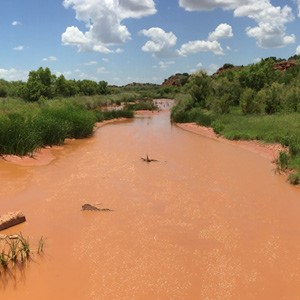July 20, 2020


Robert Reed & Robert Loucks
Pore Discovery
In 2006, Bureau research geologists Robert Reed and Robert Loucks set out to find exactly where gas is stored in prolific natural gas shales such as Texas’ Barnett Shale. At the time, this was poorly understood, and with start-up funding from the State of Texas Advanced Resource Recovery (STARR) program, they set out to solve the mystery. Taking advantage of high-magnification scanning electron microscope (SEM) imaging and advances in sample preparation techniques, they discovered that many of the gas-bearing pores were in organic matter within the shales. Their presentation of this research at the 2007 American Association of Petroleum Geologists annual convention won the pair an award for their research.

In 2008, the scanning electron microscope image shown here was first published in a paper by the late Steve Ruppel and Robert Loucks. This image became widely known and was extensively “borrowed” by researchers from other institutions worldwide interested in the discovery. Since 2009, Loucks’ and Reed’s article in the Journal of Sedimentary Research describing the pore discovery has been cited more than 2,200 times in other publications, with more citations coming in every year. Interest in further work in this area quickly kickstarted an industry-funded research group at the Bureau, the Mudrock Systems Research Laboratory, which has continued to this day.
Publication
Loucks, R.G., Reed R. M., Ruppel, S. C., and Jarvie, D. M., 2009, Morphology, Genesis, and Distribution of Nanometer-Scale Pores in Siliceous Mudstones of the Mississippian Barnett Shale, Journal of Sedimentary Research, v. 79, no. 12, 848–861, doi:10.2110/jsr.2009.092.

Tara Bongiovanni
Surface Water–Groundwater Interactions in the Brazos River and their Effect on Smalleye and Sharpnose Shiners

Two endangered freshwater minnows—the sharpnose shiner (Notropis oxyrhynchus) and the smalleye shiner (Notropis buccula)—have been historically found throughout the Brazos River basin in Texas. However, their range has been greatly reduced because of groundwater withdrawals, river fragmentation due to physical barriers, and alteration of natural streamflow regimes due to reservoirs. The wide, shallow stream habitat the shiners need to survive and propagate is now limited to the upper basin of the Brazos River, upstream of Possum Kingdom Reservoir.
Scientists at the Bureau are studying the Brazos River to improve our understanding of how groundwater and surface water resource development has quantitatively affected the streamflows these fish need to successfully reproduce. We are using a combination of historic hydrologic data and new field data to understand the extent to which pumping of the Seymour Aquifer affects streamflows that would have otherwise flowed on to streams. We are also using long-term streamflow records to assess how reservoir operations have affected natural flow regimes, focusing on minimum flows, high-flow pulses, and changes in how alluvial aquifers support stream baseflow.
The results of this study can inform the development of a recovery plan, in particular research and management actions to maintain flows needed for the endangered minnows to spawn.
Publication
Wolaver, B., 2020, Surface Water–Groundwater Interactions in the Upper Brazos River Basin of Texas and Quantitative Relationship to Smalleye and Sharpnose Shiner Reproductive Success, Final Performance Report, Grant No. 493010, Federal Grant No. TX E-185-R-1.